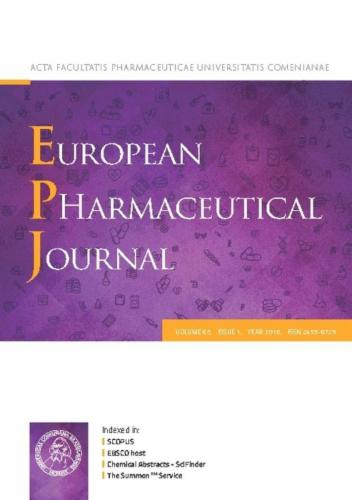Racemic drugs are not necessarily less efficacious and less safe than their single-enantiomer components
IF 4.7
3区 医学
Q1 PHARMACOLOGY & PHARMACY
引用次数: 0
Abstract
Practitioners of drug discovery and development of chiral drugs are confronted with the dilemma whether to develop a racemate or a single enantiomer. In 2024, articles were published stating that single enantiomers are clinically more potent than racemic mixtures and that the use of single enantiomers instead of racemates improves the effectiveness and/or safety of treatment. The Commentary provides a rebuttal of these allegations. A historical survey of the motivation for developing single-enantiomer drugs is given. Cases of preference of racemate/diastereomeric-mixture drugs over single-enantiomer drugs are described, along with the following cases of teaching away from chiral switches of racemate/diastereomeric-mixture drugs to single-enantiomer drugs: rapid interconversion in vivo of paired enantiomers, fast in vivo conversion of a diastereomeric-mixture drug to its active form, enantiomerization in vivo of an (R)-enantiomer to its paired (S)-enantiomer. Advantages of racemic drugs versus single-enantiomer drugs and vice versa are listed. Racemate/diastereomeric-mixture drugs are not necessarily less efficacious and less safe than their single-enantiomer components. They will continue to serve as potential candidates for chiral switches. The Commentary concludes with highlighting the proposition that development of chiral drugs should proceed forward with the racemate until and unless some relevant differentiated property is identified.

外消旋药物的疗效和安全性并不一定低于其单对映体成分。
药物发现和开发手性药物的从业者面临着是开发外消旋体还是单一对映体的困境。2024年发表的文章指出,单对映体在临床上比外消旋体混合物更有效,并且使用单对映体代替外消旋体可提高治疗的有效性和/或安全性。评注对这些指控进行了反驳。对单对映体药物的开发动机进行了历史回顾。本文描述了外消旋体/非对映异构体混合药物优于单对映异构体药物的案例,以及从外消旋体/非对映异构体混合药物的手性转换到单对映异构体药物的以下案例:配对对映异构体在体内快速相互转化,非对映异构体混合物药物在体内快速转化为活性形式,(R)-对映异构体在体内对映异构体向配对(S)-对映异构体的对映异构。列出了外消旋药物与单对映体药物的优点,反之亦然。外消旋体/非对映体混合药物不一定比它们的单一对映体成分更有效和更不安全。它们将继续作为手性开关的潜在候选者。评注最后强调了一个命题,即手性药物的开发应该继续进行外消旋体,直到或除非一些相关的区分性质被确定。
本文章由计算机程序翻译,如有差异,请以英文原文为准。
求助全文
约1分钟内获得全文
求助全文
来源期刊
CiteScore
9.60
自引率
2.20%
发文量
248
审稿时长
50 days
期刊介绍:
The journal publishes research articles, review articles and scientific commentaries on all aspects of the pharmaceutical sciences with emphasis on conceptual novelty and scientific quality. The Editors welcome articles in this multidisciplinary field, with a focus on topics relevant for drug discovery and development.
More specifically, the Journal publishes reports on medicinal chemistry, pharmacology, drug absorption and metabolism, pharmacokinetics and pharmacodynamics, pharmaceutical and biomedical analysis, drug delivery (including gene delivery), drug targeting, pharmaceutical technology, pharmaceutical biotechnology and clinical drug evaluation. The journal will typically not give priority to manuscripts focusing primarily on organic synthesis, natural products, adaptation of analytical approaches, or discussions pertaining to drug policy making.
Scientific commentaries and review articles are generally by invitation only or by consent of the Editors. Proceedings of scientific meetings may be published as special issues or supplements to the Journal.

 求助内容:
求助内容: 应助结果提醒方式:
应助结果提醒方式:


